OIST Developmental Neurobiology Course 2017
Posted by SarahM, on 30 November 2017
Built into the side of a tree covered hill on a remote Japanese island lies what at first sight appears to be a super-villain’s lair, or perhaps the HQ of Jurassic Park. In fact we had arrived at the Okinawa Institute of Science and Technology (OIST) for their 2 week Developmental Neurobiology Course. DNC is a 2 week intensive lecture and lab based course designed to teach, inspire and foster collaborations between the next generation of developmental neurobiologists.
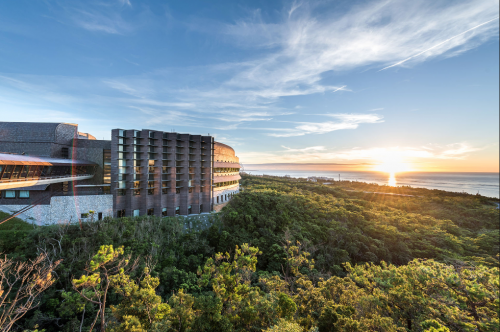
23 of us were accepted, a highly diverse collection of PhD students and Postdocs from all over the world to spend two weeks in paradise all there because of our love for developmental neurobiology. The course was split into two halves: Week one – lectures in the morning and a lab project in the afternoon. Week 2 – lecture bootcamp! 6-7 hours of fascinating lectures a day by some of the most distinguished researchers in the field on a vast variety of topics.
While the classes were intense there was plenty of downtime to interact, consolidate and simply think about the wider field beyond our individual specialities, with plenty of swimming off the beach attached to our accommodation! In this post I will try to summarise the course and hopefully explain why I think courses like this are so crucial for early career researchers to participate in.
Week 1:
After 27 hours of travelling I finally arrived at our Seaside House accommodation. OIST generously covered all course costs, accommodation, food and half of travel costs for all participants; a critical factor in making it accessible to early career researchers.
We started our first day with intensive short talks from all participants so we all knew a little bit about each other’s background. The range of specialities was huge, from pure molecular biologists to electrophysiologists, to using Zebrafish to study dyslexia, making for some fascinating discussions throughout the 2 week course. We got the chance to learn more about each other’s research the following day, where after a fascinating lecture on microscopy by Ulrike Engel, we gathered for a poster session to present our research to staff and participants.
A key part of DNC is the opportunity to learn new techniques that we might not otherwise get the opportunity to learn. This was taught through a choice of one of five lab projects, but before committing we got a brief rotation in each lab to learn more. The five lab project options available to us were:
- Analysis of Drosophila embryonic neuromuscular development
- Ca imaging and electrophysiology recording from Drosophila Larvae
- In utero electroporation in mouse
- Live imaging of zebrafish nervous system
- Electrophysiology in zebra finch auditory system
I was lucky enough to be taught in utero electroporatation in mouse by Hiroshi Kawasaki, a powerful technique for highly spatially specific gene editing during development.
Having been assigned our lab projects the week continued with lectures in the morning and lab projects in the afternoon. Our lectures were fascinating and varied:
Cecilia Moens (Fred Hutchinson) spoke about cranial motor neuron development in the Zebrafish.
Lisa Goodrich (Harvard) explained about the peripheral nervous system, focusing on cochlear development.
Hiroshi Kawasaki (Kanazawa University) told us about his research focused on the molecular mechanisms controlling cortical development.
Michael Granato (U Penn) talked about axon guidance and regeneration in Zebrafish.
For me the length (3 hours) of the lectures was key to the immersion of the course. This time period gave the lecturers the chance to speak about their long research journey and all the side stories that would normally be left out of a shorter lecture. Although intense, every hour we were rewarded (behavioural conditioning?) with coffee and snacks, we had the opportunity to ask questions at any point, and the lecturers were able to enter into group discussions without fear of time constraints.
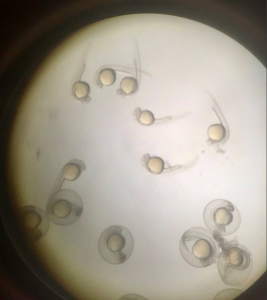
In the afternoons we utilised the fantastic laboratories at OIST to work on our lab projects with the help of our group leaders and the fantastic Postdoc tutors. Under their careful tuition we practised and perfected our techniques, and gathered our data to present at the end of the course. The resources available at OIST were staggering, we were able to perform CLARITY on our electroporated brains and image them with a light-sheet microscope, while the Drosophila group used super-resolution to image individual boutons in the Drosophila larvae!
Lab projects complete, we celebrated the end of the first week with a barbecue and fireworks at Seaside House, and of course Japanese karaoke with the course organisers!!
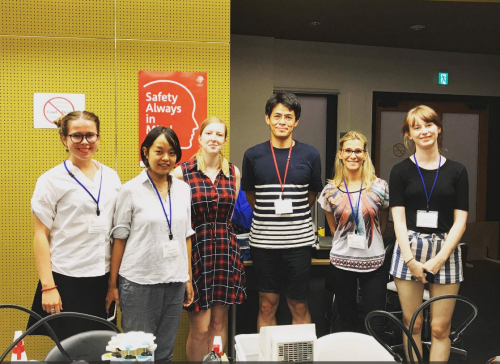
Week 2: Lecture Bootcamp!!
Before the intensive days of lectures started, we were given a day off to recuperate and explore Okinawa. For a couple of us that meant a relaxing trip to an Onsen, for others Scuba-Diving, and for one adventurous group it involved a multi-stop tour to a pineapple farm, a Dragonball Z-themed butterfly park (…?) and the Okinawa aquarium.
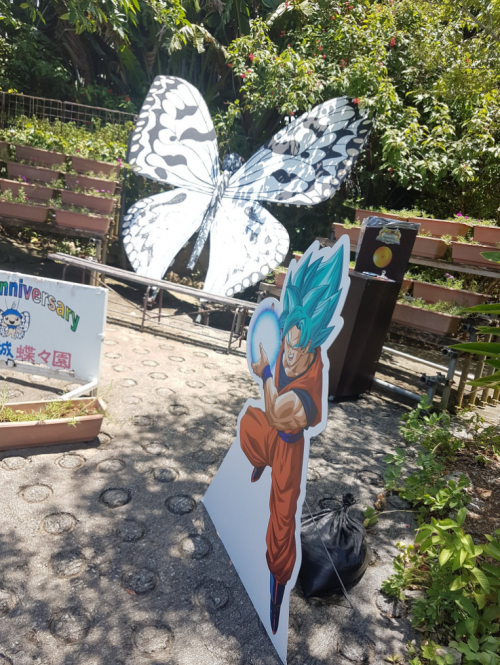
Re-energised after our free day we threw ourselves into the second week of lectures, learning about ideas and concepts that we had never encountered in our day to day research:
Yimin Zou (UCSD) spoke about how we must understand the processes controlling axon guidance during development, to investigate how circuits may repair themselves following injury.
Jeff Wickens (OIST) gave a lecture on the neural mechanisms that underlie learning and adaptation in the mammalian brain.
Kang Shen (Stanford) talked about the molecular mechanisms behind dendrite patterning and how they wire into neural circuits.
Tomoyuki Takahashi (OIST) we were privileged to be given a lecture by one of the founders of electrophysiology, a fact made clear by the massive increase in audience size as many OIST researchers came to hear him speak.
Mei Zhen ( University of Toronto) described her research on understanding how the C.elegans neural motor system translates into movement.
Greg Basaw (U Penn) gave as another axon guidance lecture, this time from the perspective of receptor regulation during Drosophila development.
Anne Hart (Brown) gave one of my favourite lectures as she described using a wide range of models from C.elegans to mice to study disease mechanisms in a highly interactive manner calling on us to think of research ideas.
That Friday afternoon we gave our brains a chance to consolidate as we were taken on an excursion to Shurijo Castle to experience more of the island’s rich history before enjoying a traditional Okinawa dinner with the course organisers and lecturers in the capital Naha.
The next day we received news, after several days of speculation, that there was a typhoon passing between the Okinawa prefecture and mainland Japan. OIST is built for this weather so we continued on with the course albeit with an embargo on all water activities.
Hitoshi Okamoto (Riken) gave a fascinating lecture on social conflict in Zebrafish and the role of the habenula in this. To me this was particularly interesting as I had never considered this behavioural use for the Zebrafish before.
Tadashi Isa (NIPS) gave our penultimate lecture on how networks reorganise to recover movements following spinal cord injury.
Yoko Yazaki-Sugiyama (OIST) delivered our final lecture on critical periods in Zebra Finch auditory systems during song learning.
As lectures concluded on the final day we concluded the academic side of the course by giving presentations on our lab projects from the first week. This gave us an excellent opportunity to show the skills we had developed, consolidate our knowledge and thank our teachers and tutors for their guidance and support.
We gathered for a final dinner together in Seaside house with traditional Okinawan entertainment as we ate. After dinner we had final words from the course organisers who presented us with certificates of our participation. This also gave us time to thank them extensively for all their work organising the course and providing us with the most incredible learning opportunity that will shape our careers as neurobiologists. We ended the course as a team, with fireworks and karaoke as the lightening storm from the typhoon raged around us.
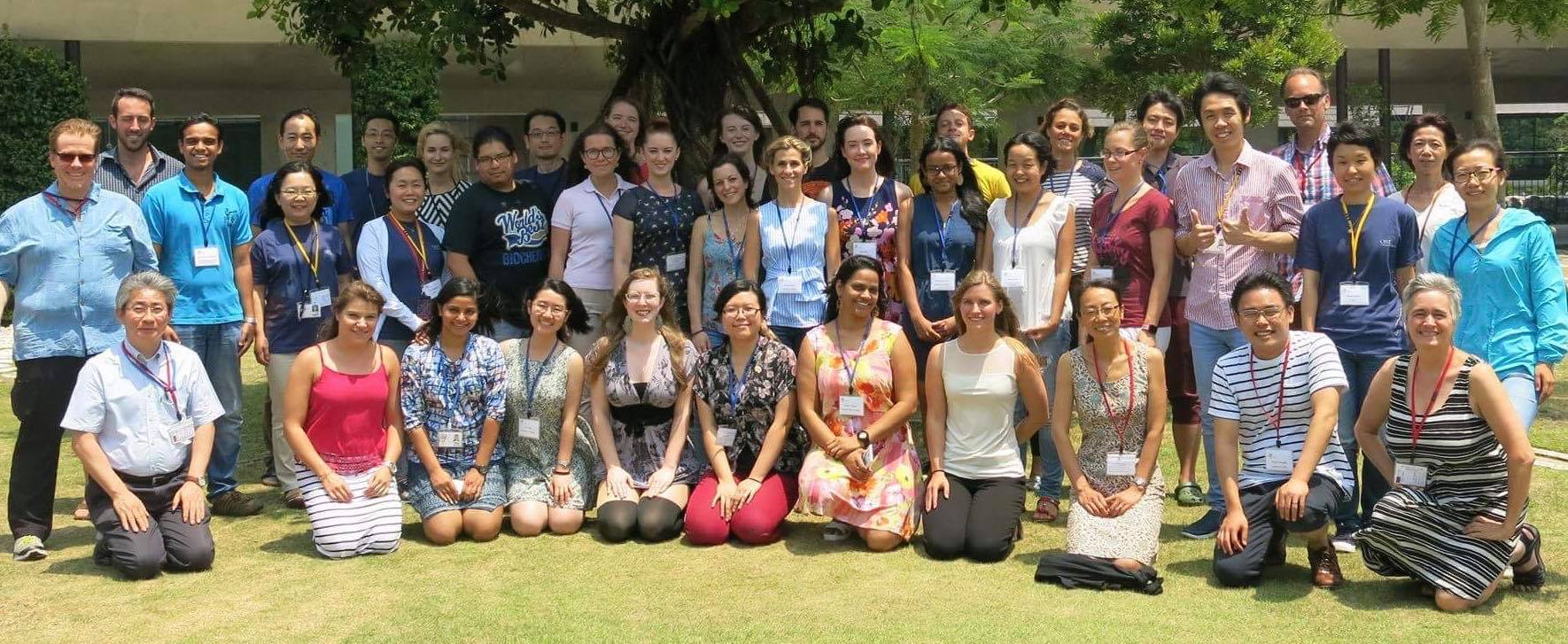
This course is such a fantastic opportunity for young researchers. The vast diversity of lectures will broaden your horizons and bring new directions to your project and future plans. The people I met will be my friends and colleagues for the rest of my career and I hope one day I will get to publish alongside them as we collaborate together. I cannot thank the course organisers; Yoko Yazaki-Sugiyama, Ichiro Masai, David Van Vactor, Yimin Zou and Hiroshi Kohsaka enough for this opportunity as well as all the support staff who made it happen. I encourage all young developmental neurobiologists to apply to this wonderful course, you will not regret it!
Next stop: Wood’s Hole 2018!


 (3 votes)
(3 votes)